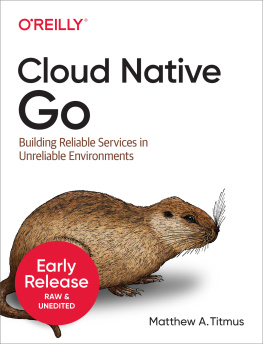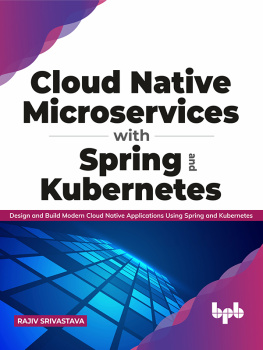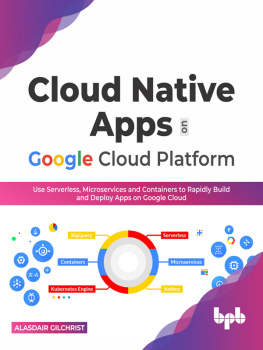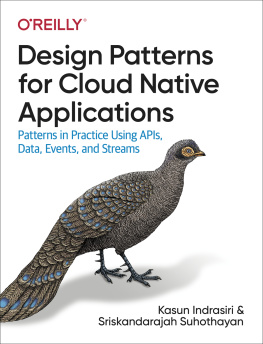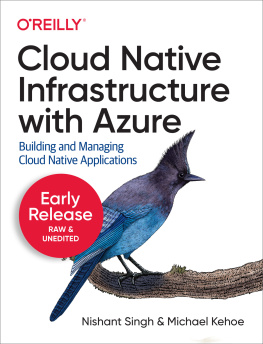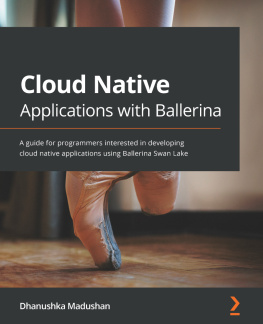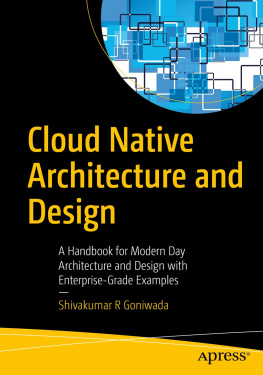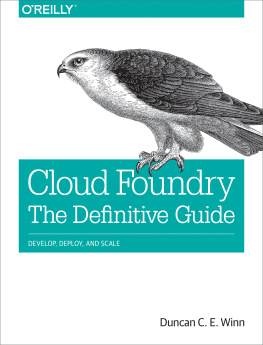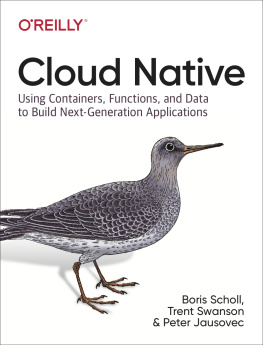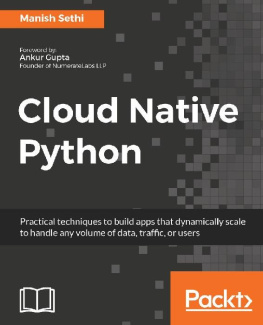Matthew A. Titmus - Cloud Native Go
Here you can read online Matthew A. Titmus - Cloud Native Go full text of the book (entire story) in english for free. Download pdf and epub, get meaning, cover and reviews about this ebook. year: 2021, publisher: OReilly Media, Inc., genre: Home and family. Description of the work, (preface) as well as reviews are available. Best literature library LitArk.com created for fans of good reading and offers a wide selection of genres:
Romance novel
Science fiction
Adventure
Detective
Science
History
Home and family
Prose
Art
Politics
Computer
Non-fiction
Religion
Business
Children
Humor
Choose a favorite category and find really read worthwhile books. Enjoy immersion in the world of imagination, feel the emotions of the characters or learn something new for yourself, make an fascinating discovery.
- Book:Cloud Native Go
- Author:
- Publisher:OReilly Media, Inc.
- Genre:
- Year:2021
- Rating:3 / 5
- Favourites:Add to favourites
- Your mark:
- 60
- 1
- 2
- 3
- 4
- 5
Cloud Native Go: summary, description and annotation
We offer to read an annotation, description, summary or preface (depends on what the author of the book "Cloud Native Go" wrote himself). If you haven't found the necessary information about the book — write in the comments, we will try to find it.
Cloud Native Go — read online for free the complete book (whole text) full work
Below is the text of the book, divided by pages. System saving the place of the last page read, allows you to conveniently read the book "Cloud Native Go" online for free, without having to search again every time where you left off. Put a bookmark, and you can go to the page where you finished reading at any time.
Font size:
Interval:
Bookmark:

by Matthew A. Titmus
Copyright 2021 OReilly Media. All rights reserved.
Printed in the United States of America.
Publishe0d by OReilly Media, Inc. , 1005 Gravenstein Highway North, Sebastopol, CA 95472.
OReilly books may be purchased for educational, business, or sales promotional use. Online editions are also available for most titles (http://oreilly.com). For more information, contact our corporate/institutional sales department: 800-998-9938 or corporate@oreilly.com .
- Acquisitions Editor: Suzanne McQuade
- Development Editor: Amelia Blevins
- Production Editor: Daniel Elfanbaum
- Interior Designer: David Futato
- Cover Designer: Karen Montgomery
- Illustrator: Rebecca Demarest
- January 2021: First Edition
- 2020-01-02: First Release
- 2020-01-27: Second Release
- 2020-03-02: Third Release
- 2020-04-08: Fourth Release
- 2020-05-28: Fifth Release
- 2020-10-28: Sixth Release
- 2020-12-21: Seventh Release
- 2021-01-26: Eighth Release
See http://oreilly.com/catalog/errata.csp?isbn=9781492076339 for release details.
The OReilly logo is a registered trademark of OReilly Media, Inc. Cloud Native Go, the cover image, and related trade dress are trademarks of OReilly Media, Inc.
The views expressed in this work are those of the author, and do not represent the publishers views. While the publisher and the author have used good faith efforts to ensure that the information and instructions contained in this work are accurate, the publisher and the author disclaim all responsibility for errors or omissions, including without limitation responsibility for damages resulting from the use of or reliance on this work. Use of the information and instructions contained in this work is at your own risk. If any code samples or other technology this work contains or describes is subject to open source licenses or the intellectual property rights of others, it is your responsibility to ensure that your use thereof complies with such licenses and/or rights.
978-1-492-07626-1
[LSI]
For you, dad.
Your gentleness, wisdom, and humility are dearly missed.
Also, you taught me to code, so any mistakes in this book are technically your fault.
With Early Release ebooks, you get books in their earliest formthe authors raw and unedited content as they writeso you can take advantage of these technologies long before the official release of these titles.
This will be the 1st chapter of the final book. Please note that the GitHub repo will be made active later on.
If you have comments about how we might improve the content and/or examples in this book, or if you notice missing material within this chapter, please reach out to the editor at .
The most dangerous phrase in the language is, Weve always done it this way.
Grace Hopper, Computerworld (January 1976)
If youre reading this book, then youve no doubt at least heard the term cloud native. More likely youve probably seen some of the many, many articles, written by vendors bubbling over with breathless adoration and dollar signs in their eyes. If this is the bulk of your experience with the term so far then you can be forgiven for thinking the term to be ambiguous and buzzwordy, just another of a series of markety expressions that might have started as something useful but have since been taken over by people trying to sell you something. See also: Agile, DevOps.
For similar reasons a web search for cloud native definition might lead you to think that all an application needs to be cloud native is to be written in the right language or framework, or to use the right technology. Certainly, your choice of language can make your life significantly easier or harder, but its neither necessary nor sufficient for making an application cloud native.
So is cloud native just a matter of where an application runs? The term cloud native certainly suggests that. All youd need to do is pour your kludgy. A kludgy application in Kubernetes is still kludgy.
So what is a cloud native application? In this chapter, well answer exactly that. First, well examine the history of computing service paradigms up to (and especially) the present, and discuss how the relentless pressure to scale drove (and continues to drive) the development and adoption of technologies that provide high levels of dependability at often vast scales. Finally, well identify the specific attributes associated with such an application.
The story of networked applications is the story of the pressure to scale.
The late 1950s saw the introduction of the mainframe computer. At the time, every program and piece of data was stored in a single giant machine that users could access by means of dumb terminals with no computational ability of their own. All the logic and all the data all lived together as one big happy monolith. It was a simpler time.
Everything changed in the 1980s with the arrival of inexpensive network-connected PCs. Unlike dumb terminals, PCs were able to do some computation of their own, making it possible to offload some of an applications logic onto them. This new multi-tiered architecturewhich separated presentation logic, business logic, and data ()made it possible for the first time for the components of a networked application to be modified or replaced independent of the others.
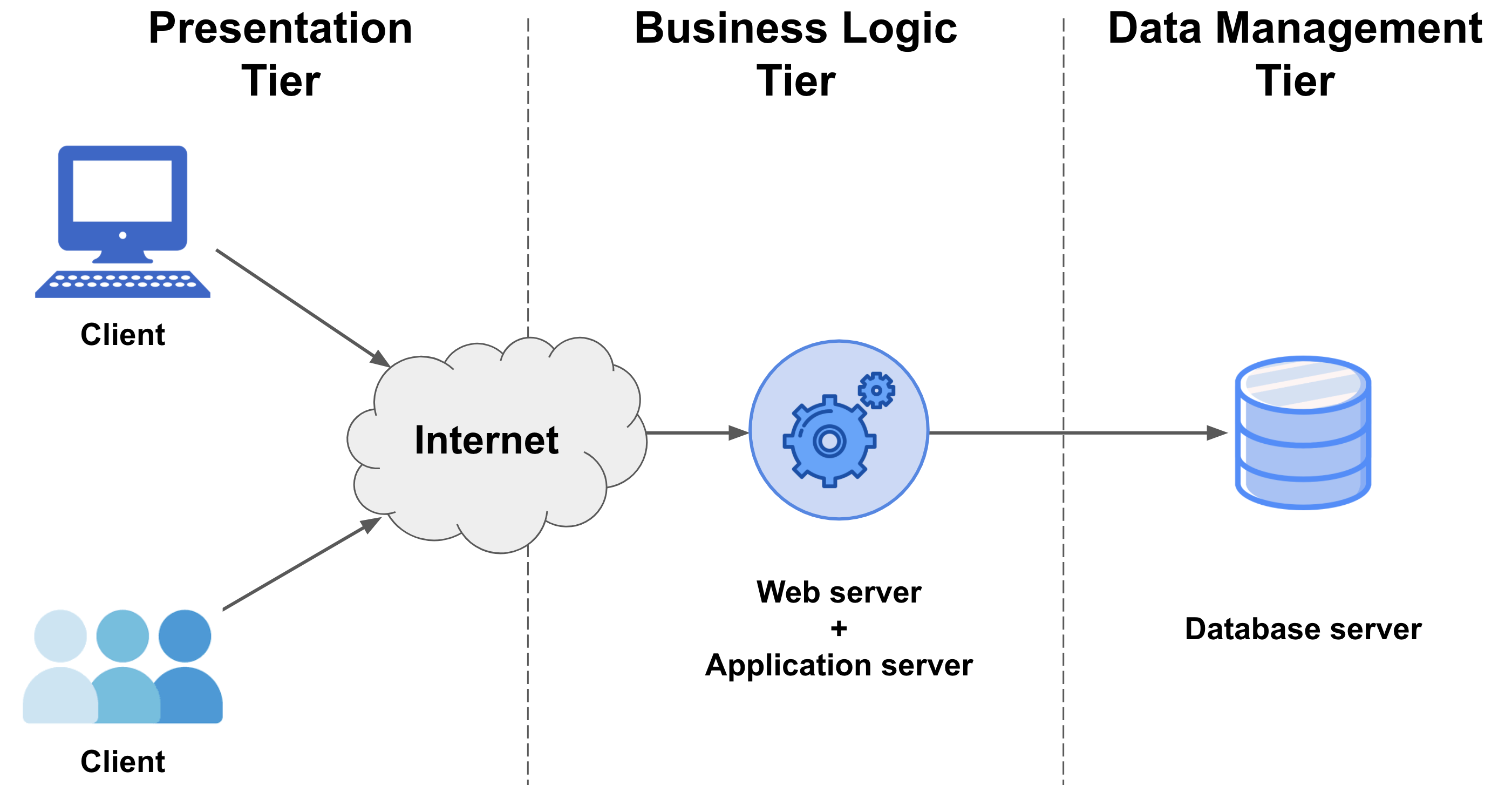
In the 1990s the popularization of the World Wide Web and the subsequent dot-com gold rush introduced the world to the software-as-a-service (SaaS). Entire industries were built on the SaaS model, driving the development of more complex and resource-hungry applications, which were in turn harder to develop, maintain, and deploy. Suddenly the classic multi-tiered architecture wasnt enough anymore. In response, business logic started to get decomposed into sub-components that could be developed, maintained, and deployed independently, ushering in the age of microservices.
In 2006 Amazon launched Amazon Web Services (AWS), which included the Elastic Compute Cloud (EC2) service. Although AWS wasnt the first infrastructure-as-a-service (IaaS) offering, it revolutionized the on-demand availability of data storage and computing resources, bringing Cloud Computingand the ability to quickly scaleto the masses, catalyzing a massive migration of resources into the cloud.
Unfortunately, organizations soon learned that life at scale isnt easy. Bad things happen, and when youre working with hundreds or thousands (or more!) of resources, bad things happen a lot. Traffic will wildly spike up or down, essential hardware will fail, upstream dependencies will become suddenly and inexplicably inaccessible. Even if nothing goes wrong for a while, you still have to deploy and manage all of these resources. At this scale, its impossible (or at least wildly impractical) for humans to keep up with all of these issues manually.
Font size:
Interval:
Bookmark:
Similar books «Cloud Native Go»
Look at similar books to Cloud Native Go. We have selected literature similar in name and meaning in the hope of providing readers with more options to find new, interesting, not yet read works.
Discussion, reviews of the book Cloud Native Go and just readers' own opinions. Leave your comments, write what you think about the work, its meaning or the main characters. Specify what exactly you liked and what you didn't like, and why you think so.

